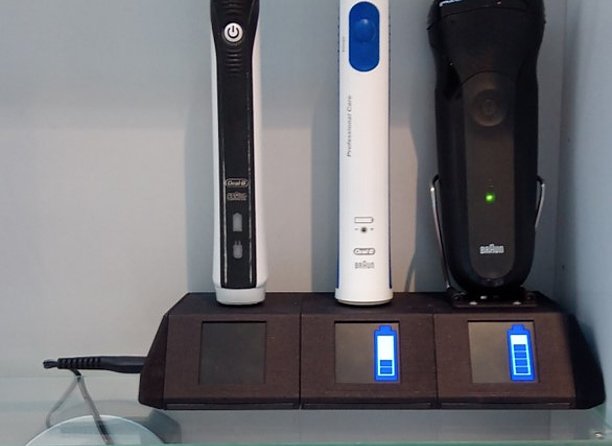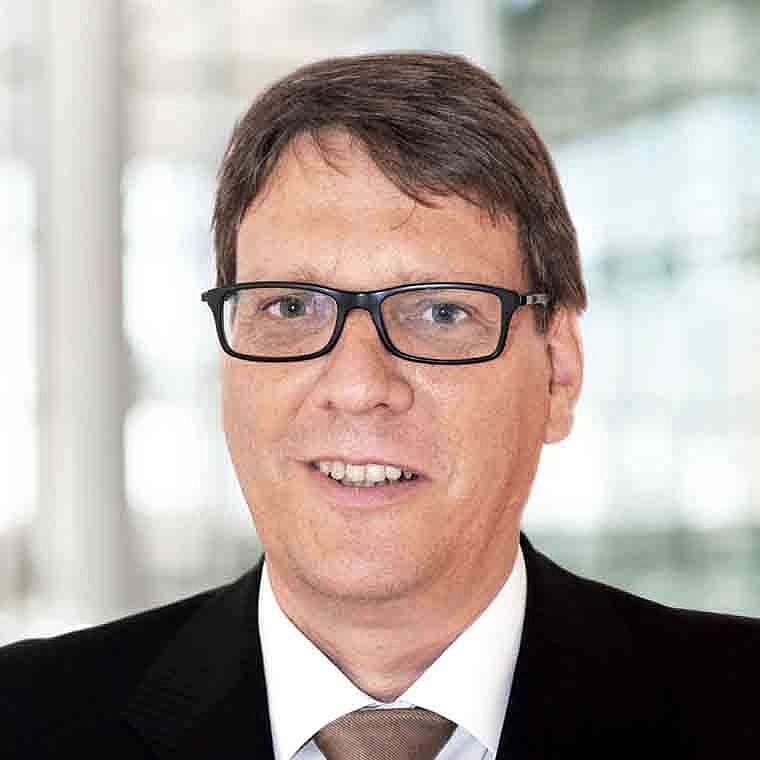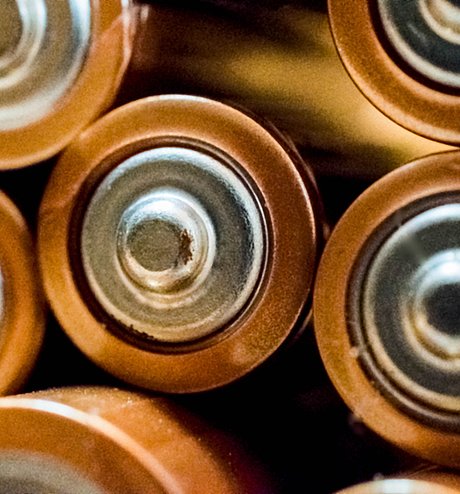Modular charging station - Sustainable charging station for small, battery-operated appliances
Ref.-No. 5957
Keywords: Modular charging station for small devices, charge control for batteries
This modular charging station for small, battery-operated devices like electric toothbrushes enables low-wear charging of batteries and reduces messy cabling. Battery-operated devices such as toothbrushes and electric shavers do not yet have their own fixed place in the bathroom. They, along with their power cords, lie about in drawers and medicine cabinets. Each device has its own specific power cord and the user is the one who has to charge them, leaving them often dead and unavailable for use.
This invention describes a modular charging system for small bathroom appliances. Every device is assigned a charging module as its permanent home. Power cords can be dispensed with and each device gets its own neat and tidy spot. Devices are always charged and always ready for use.
Currently, the batteries for these devices are fully charged for a long operating life. Operating life is an important marketing aspect at the trade-off of a large battery. If the devices are kept on a charging station, the batteries can be kept at an SOC of 50%-80%, increasing their life. Products will last longer and be more sustainable. Smaller batteries can be used with the same operating life, which greatly reduces the prime costs of the devices.
The charging modules can be connected together in a chain in seconds and powered by a single power cord.
Competitive Advantages
- Modular charging system
- Cost savings
- Extended service life for small appliances
- Sustainability
Commercial Opportunities
If a customer already has a charging module for, e.g., an electric shaver, they are likely only to buy a new toothbrush that has a compatible charging system. This increases customer loyalty and sales, and can offer a unique selling proposition on the market by making products from different manufacturers seem interchangeable.
Current Status
An application was submitted to the German Patent and Trademark Office on February 19th, 2021, with subsequent applications in other countries possible in the priority year. An existing prototype is proof of concept for the technology. On behalf of Hamm-Lippstadt University of Applied Sciences, we are offering interested companies the opportunity to license and continue to develop this technology.
—
An invention of Hamm-Lippstadt University of Applied Sciences.



